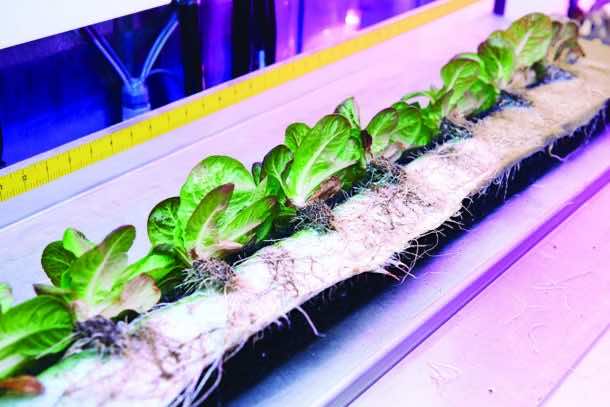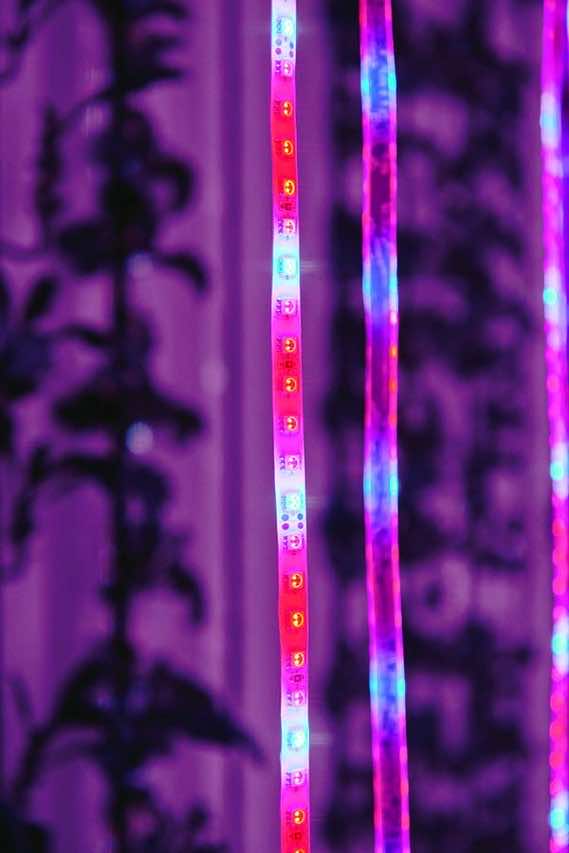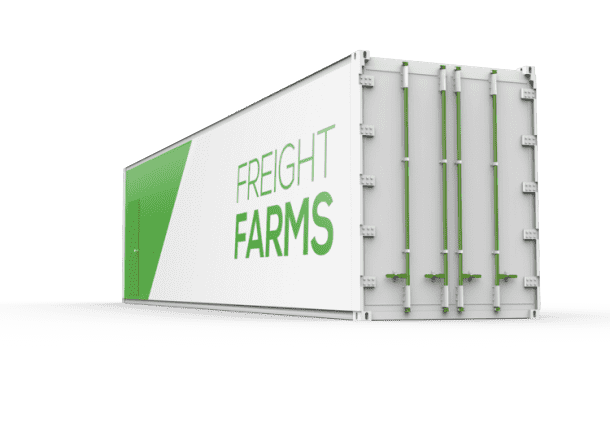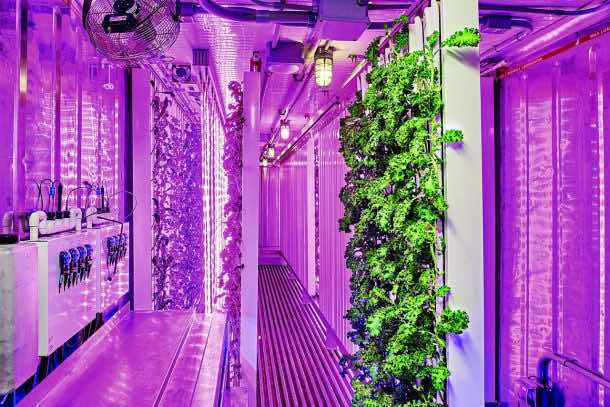The simple green and white colored exterior of the three containers sitting in the water somewhere in Boston belies the astonishing secret of the incredible purpose they are being used for. The three shipping containers were previously used as reefers, i.e. the temperature controlled refrigerated shipping containers used for the shipment of the cold objects.
In spite of the chilled weather on the outside, the interior of the boxes is maintained at 63 degrees. The air inside the 320 square feet reefer boxes is heavy with the earthly aroma of the leafy veggies. Each box houses 256 vertical rows of plants, lit up by the intense pink light as that of a noonday.

The project is growing veggies like lettuce and other green herbs and is driven by the agri-tech startup named the Freight Farms. The founders of the company had a hunch that the LED lights will make it big, and they would ultimately be able to find a relatively inexpensive alternative for providing energy to the plants. The co-founder of the company, Brad McNamara explained the concept behind the Freight Farms:
“Traditional research said, yeah, LEDs are good, but the more important research was that they were improving at a Moore’s-Law rate.”
Each Freight “farm” is supplied with a water distribution system, liquid fertilizer, and a propane container to generate additional carbon dioxide. The entire farm consumes a mere 10 gallons water and 80kWhr of energy each day. If the conditions are optimum, the produce is ready for sale within a mere six weeks which is quite astounding. The data analysis of the company has revealed that the Freight Farm box, on average, can produce 48,568 lettuces heads for sale annually; the same yield as that generated by the two acres of land cultivated via the conventional farming techniques.

2015 was a huge year for the food and agriculture technology startups, garnering as much as $4.6 billion investment. This figure was nearly the double of the investment poured into this sector during the year before. Amazingly, the new startups are not only upgrading the conventional farming system; they are redefining it entirely.
Sitting on the top of a Brooklyn warehouse, Gotham Green completed work on the world’s largest rooftop greenhouse. The CEO of the enterprise, Viraj Puri explained the idea of the project:
“When we started this thing in 2009, we were one of the only ones out of this new guard of hydroponic indoor farming. In 2016, there’s probably 100 of us.”
FarmedHere from Chicago, AeroFarms in Newark are the other big players in the hydroponics domain. Freight Farms has received a massive funding of nearly $5 million and will sell almost 150 farms this year, with each farm bring sold at $80,000.

Though the previous agri-tech startups faced many challenges as they tried to sell off their produce to the consumers, Freight Farm only supplies the essential technology and tools to the other growers and does not operate any commercial farms at all.
Each Freight Farms box relays back vital data like the temperature, humidity level, and carbon dioxide percentage, to the main server of the company. As more data is gathered by the main server, each owner of a Freight Farm box benefits from the understanding generated by the analysis of a large number of boxes. Indeed, many of the buyers are the first time farmers who are then trained via a specially designed two-day course and are later interconnected with the vast community of the Freight Farmers where they can share their knowledge and experiences.

Till date, the company has installed almost 60 Freight Farms boxes in 22 states and two Canadian provinces. These boxes have been inducted in as varying climatic conditions as Texas and Ontario. The real surprise came when the company owners were told of the traditional farmers investing in the Freight Farm boxes as a tool to supplement their income in the off-season. However, most of the Freight Farms can be located in the warehouses and alleyways across the city. The result?
“hyperlocal produce, which sometimes travels just a few feet from farm to table.”
The owner of Green Line Growers, Bobby Zuker said:
“We harvest it in the morning, and often it’s in a salad for lunch.”
However, the freshness comes at a price. The mini-lettuce is being sold by the Green Line Growers at $1.25 per head, almost twice the price of the lettuce bought from an organic store. However, the improvement in technology and other advancements will help to make the produce of these farms more affordable for the general public and help these companies break out of the elite customer niche and reach out to a wider community.
The idea gives quite a new meaning to the box-lunch, doesn’t it?



We need grow beds for vertical gardening